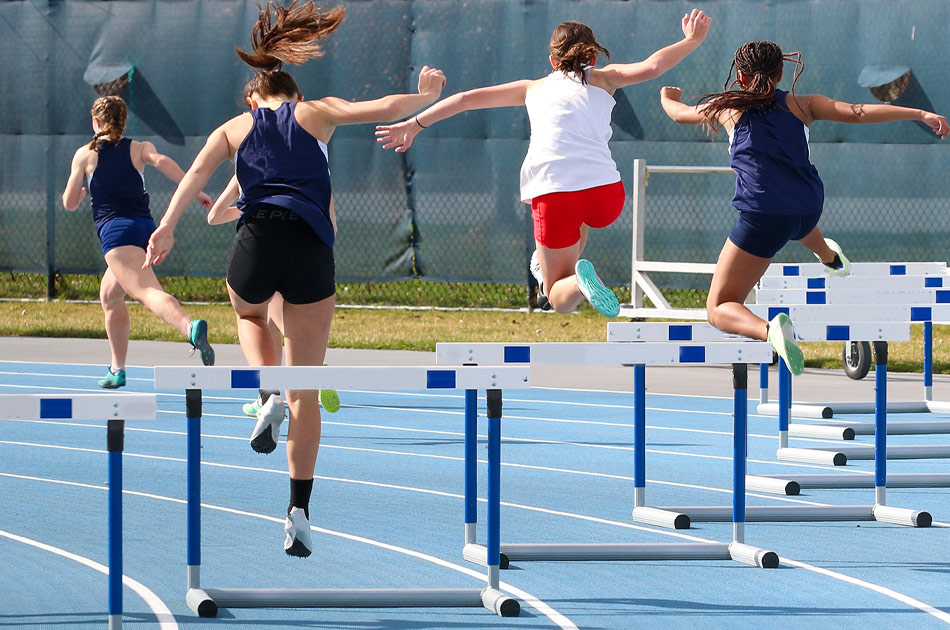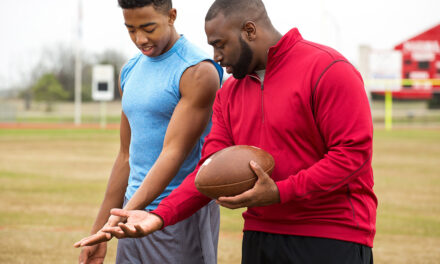Central to the high school athletic director’s numerous responsibilities is the optimization of athletic performance activities, ensuring students not only excel in their sports but do so safely and sustainably.
Before diving into program enhancements, it’s essential to grasp the core principles of strength and conditioning for high school athletes. These programs are not just about lifting weights or running laps; they are about building a foundation of physical and mental toughness, improving performance, and reducing the risk of injury.
Develop A Comprehensive Program
Assessment and Personalization – Begin with thorough assessments of athletes’ physical capabilities and tailor programs to meet their individual needs. Implementing high school athlete training programs that account for various fitness levels promotes inclusivity and maximizes potential.
Professional Development – Investing in the ongoing education of coaches and trainers in effective conditioning strategies for teens ensures that your program employs the latest and most effective training methods.
Innovative Training Techniques – Explore school sports performance enhancement strategies, such as plyometrics, agility training, and functional movements, to keep the regimen comprehensive and engaging.
Nutrition and Recovery – Emphasize the importance of nutrition and adequate recovery as part of the high school sports training optimization. Educating athletes about proper hydration, diet, and rest can significantly impact their performance and recovery.
Building a Supportive Culture – Enhancing student-athlete conditioning goes beyond physical training. Developing a culture that values mental health, teamwork, and academic achievement contributes to well-rounded and resilient athletes.
Leverage Technology For Performance Insights
Incorporating technology into strength and conditioning programs offers a competitive edge that is indispensable in today’s fast-evolving sports landscape. High school athletic directors can harness the power of performance tracking software and applications to revolutionize how athlete progress is monitored, analyzed, and enhanced.
Performance tracking technology enables the collection of detailed data on each athlete’s progress. Metrics such as strength gains, speed, agility, and endurance levels can be meticulously recorded and analyzed. This wealth of information supports data-driven decisions, ensuring that training adjustments are not based on guesswork but on solid, empirical evidence.
The immediacy of data collection through technology allows for real-time feedback to both coaches and athletes. Athletes can adjust their techniques on the spot, correcting form and effort levels to maximize each session’s effectiveness. This immediacy transforms the learning curve, making improvements more rapid and discernible.
By tracking and analyzing performance data, technology can also play a crucial role in injury prevention. Monitoring workloads and identifying potential overuse patterns allows coaches to adjust training loads proactively, reducing the risk of injuries. Furthermore, in the case of injury recovery, technology-assisted programs can facilitate a gradual and measured return to peak performance, minimizing the chances of re-injury.
Engage The Community
Community involvement is not just beneficial but essential in crafting a dynamic and supportive environment for high school athletic programs. By forging strong partnerships with local sports clinics, universities, and professional athletes, athletic directors can unlock a treasure trove of resources, knowledge, and inspiration for both their athletes and coaching staff.
Collaborations with local sports clinics and universities can provide access to advanced training facilities and equipment that may not be available within the school. These partnerships might also offer specialized training sessions or workshops led by experts in various sports disciplines, offering athletes exposure to higher levels of coaching and athletic development.
Partnerships with universities can also foster academic opportunities, emphasizing the importance of maintaining academic excellence alongside athletic prowess. Workshops on balancing sports and studies, time management, and college scholarship opportunities can help athletes plan for their futures beyond high school sports.
Engaging with the community through organized events, such as charity matches, fun runs, or sports days, can raise funds for the athletic program while also building a sense of unity and support among athletes, students, parents, and local residents. These events not only boost the program’s visibility but also foster a culture of giving back and community service among athletes.
Evaluate, Adapt Athletic Performance Standards
High school sports is in a state of continuous flux, influenced by advancements in sports science, evolving training methodologies, and changing student-athlete needs and expectations. This ever-changing environment demands that high school athletic directors and their coaching staff remain vigilant, adaptive, and proactive in evaluating and refining their strength and conditioning programs.
Stay abreast of the latest research and developments in sports science and strength training. This might involve subscribing to professional journals, attending industry conferences, or engaging with online forums dedicated to athletic training. By integrating new insights and techniques into your program, you can ensure that your athletes benefit from the most current and effective training practices.
Comparing your program with those of other schools can provide valuable insights into potential areas for enhancement. This might involve formal partnerships for information exchange or less formal discussions with counterparts at conferences or meetings. Understanding what works elsewhere can inspire innovation and improvement in your own program.
Cultivate an environment where athletes, coaches, and support staff are all committed to ongoing improvement. This culture encourages everyone to be on the lookout for ways to enhance the program, whether through innovative training techniques, new equipment, or improved nutritional advice.
Establishing regular feedback mechanisms, such as surveys, focus groups, or one-on-one meetings with athletes and coaches, is critical. These discussions can reveal much about the program’s strengths and areas needing improvement from those who experience it daily. Encourage honest and constructive feedback, emphasizing that it’s a tool for enhancement rather than criticism.










